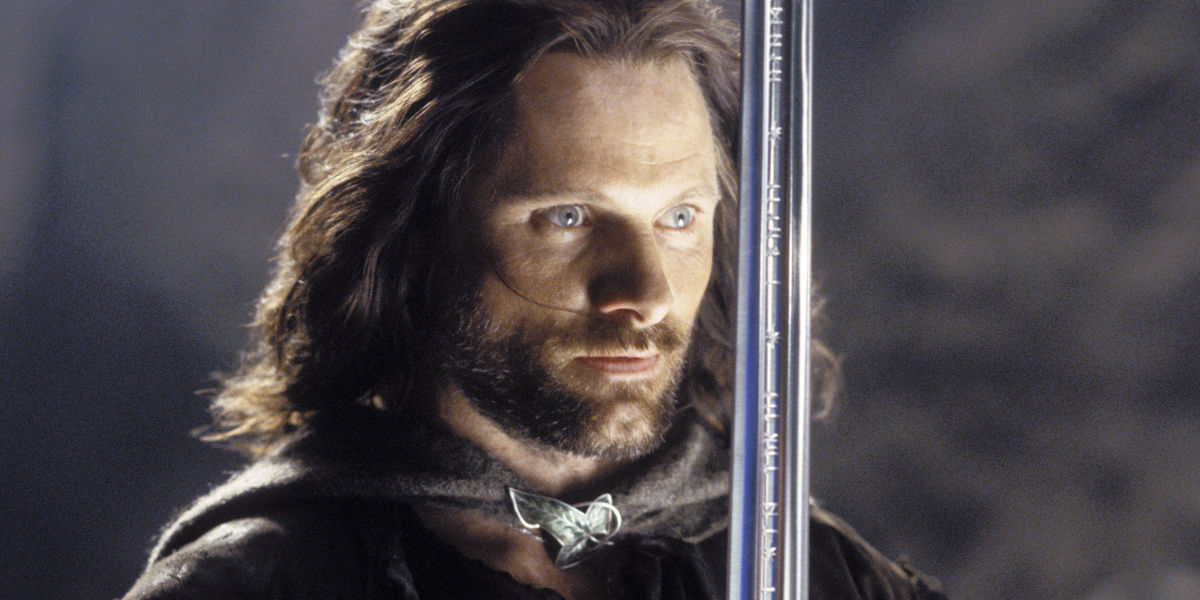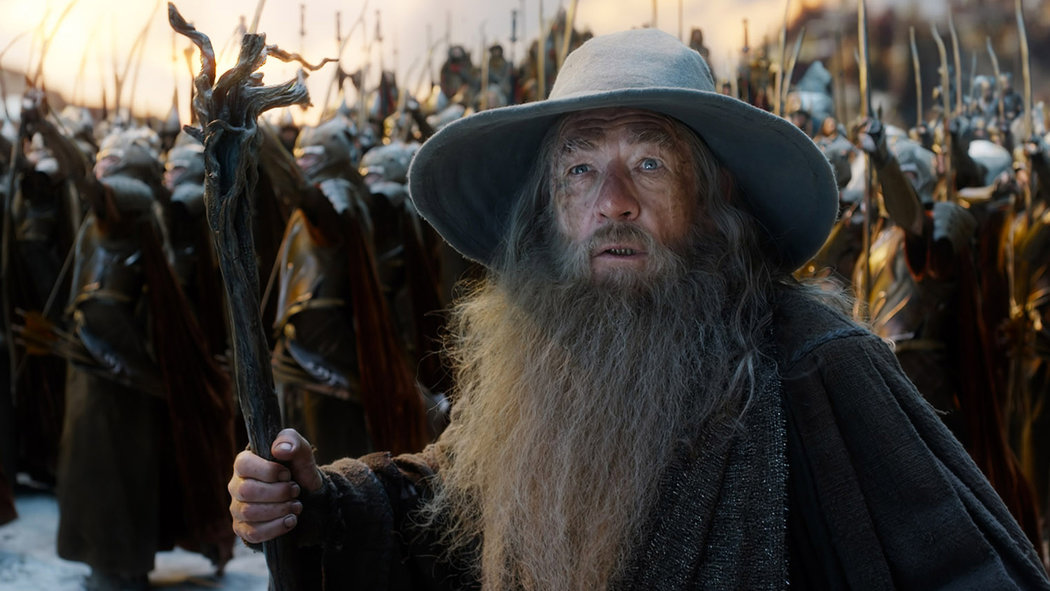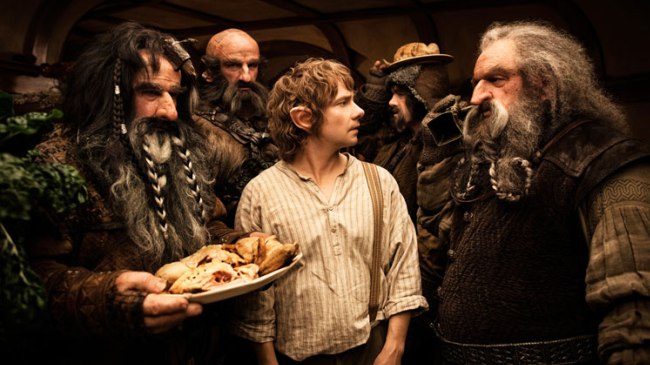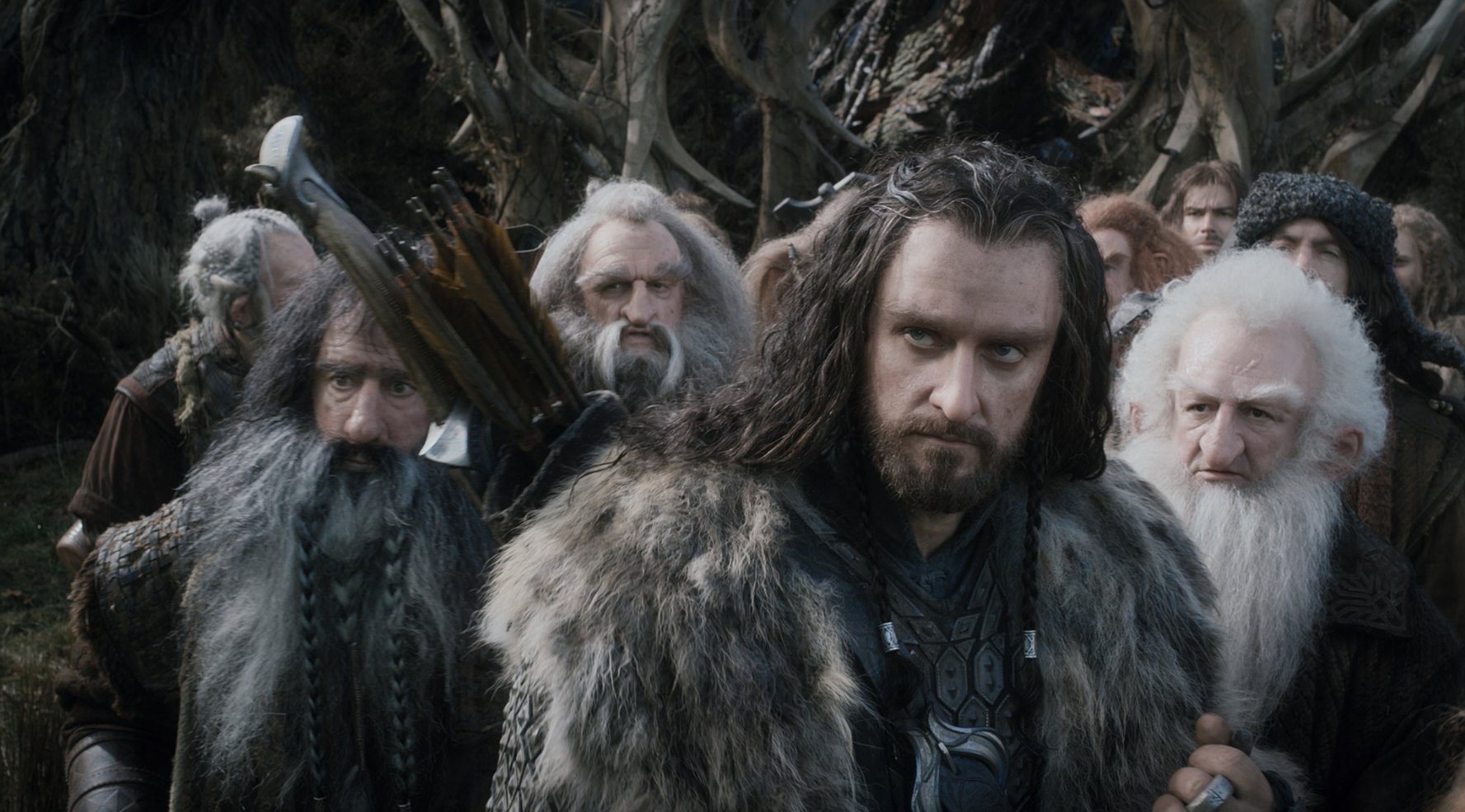
Peter Jackson’s adaptation of J.R.R. Tolkien’s influential fantasy saga was one the most ambitious film projects ever made. Regarded as one of the most unfilmable book series ever written (including an alleged attempt by The Beatles with Stanley Kubrick), it took about eight years of continuous work for Jackson and his team to prove everyone wrong.
Beginning in the early 2000s with the critically acclaimed “The Lord of the Rings” trilogy and then continuing with the disappointing “The Hobbit” prequel trilogy in the 2010s, the series is the standard upon which all fantasy films are judged.
Linking both trilogies together is the magical One Ring, with the overall chronological story following Bilbo Baggins who acquires and uses it on his journey with a company of Dwarves who seek to reclaim their homeland from a psychopathic dragon named Smaug. It’s then passed on to his distant cousin Frodo Baggins who must journey across Middle-earth to destroy it in Mount Doom before its maker can cover the world in darkness.
The first trilogy kept audiences glued to the screen for nine straight hours, revolutionized special effects, elevated New Zealand into a popular tourist attraction, and turned fantasy into a respected genre. The second trilogy? Not so much.
6. The Hobbit: The Battle of the Five Armies (2014)

After the vastly improved “Desolation of Smaug”, everyone hoped that the final entry in the series would be a return to form. Sadly, the film plummets under the prequel trilogy’s own misguided notions.
Taking a 300-page book and splitting it into three movies was never a popular decision. But one hoped that it would at least be justifiable by its entertainment factor. Anything as long as we can spend more time in Middle-earth, right?
Shortly after the conclusion of the prequel trilogy, Peter Jackson stated that he didn’t have enough time to fully develop the series, signing on after original director Guillermo del Toro bowed out due to constant delays and studio troubles. The schedule was not adjusted as he wasn’t granted enough time for pre-production or to finish the scripts to his satisfaction, so basically he just winged the whole thing. It’s telling compared to the many years of pre-production spent on the original trilogy.
It opens with a shakily rushed first act that sees the best character of the prequels killed anticlimactically (with some continuity errors) and then moves onto a much slower second act that fails to emote. The pacing is all over the place that by the time the climax arrives, it’s hard to feign an interest.
Besides Legolas becoming a logic-defying game action hero, there are some gripping action sequences in the final act particularly with Azog versus Thorin. But it’s hard to shake the feeling that we’ve seen it all done better before, mainly in “The Return of the King”.
The actors do their best with they’re given, even though it’s still hard to remember the Dwarves apart from the bitter king, the old wise one, the noticeably handsome lovestruck one, and maybe the fat one that looks like Obelix from “The Adventures of Asterix”. Azog is an unexciting antagonist and Alfrid comes annoyingly close to becoming the series Jar Jar Binks.
The end of the film leads into “The Fellowship of the Ring” which feels a little too forced. And the less said about the fate of Tauriel, the better.
5. The Hobbit: An Unexpected Journey (2012)

Martin Freeman is brilliant from his first scene as the panicky and insecure younger Bilbo Baggins, masterfully delivering every stutter, every pause, every awkward moment and mannerism with excellent timing. It’s hard not to love him. The 13 dwarves are adequately cast, each having a distinctive look that sets them apart. It’s understandably hard for all of them to get their shine. However, Richard Armitage and Ken Stott make the best impressions.
Gandalf’s subplot investigation of Dol Guldur and the Necromancer is the weakest part of the entire film and prequels. With Ian McKellen, Hugo Weaving, Cate Blanchett and Christopher Lee returning, none of that previous magic is captured, resulting in a missed opportunity that’s killed by a weak plot point. It gets even worse whenever new addition Radagast appears.
The true highlight is, of course, Andy Serkis’ reprisal as Gollum. The meeting between Bilbo and him in “Riddles in the Dark” reminds you exactly why you love the series. You sort of wish he was present throughout the whole prequel series.
Taking about 30 minutes to get going, it feels as if “An Unexpected Journey” will draw out any storyline to extend its running time. Perhaps there’s a much stronger film if 30 minutes were cut and left for the extended edition. With a deliberate pace that keeps you at arm’s length, it’s hard to get completely lost in its world.
Maybe it’s the lighter material which feels less dangerous or urgent, but relying heavily on special effects more than ever makes everything feel artificial.
4. The Hobbit: The Desolation of Smaug (2013)

The highlight of any fantasy story is of course the DRAGONS! Just ask “Game of Thrones”. And Peter Jackson definitely delivers and then some. The brilliant voice and motion is captured by Benedict Cumberbatch.
From the moment Smaug opens his eye and slowly moves the blanket of coins above him, to his fiery conversation with Bilbo and the hide-and-seek game that follows, to his pitch-perfect movements, to his breathing, voice and the final shot of him angrily flying towards Laketown. Smaug is hands down the best thing about the prequels.
Talking Dragon aside, there’s still plenty to enjoy here, from the creepy beauty of Mirkwood, the action sequence on river-floating wine barrels, and the orc attack in Laketown. The confidence is back and the pacing improved, which adds plenty of excitement throughout the picture.
Evangeline Lilly is a wondrous addition as Tauriel, an elven character specifically created for the movies to add a female presence, which is sadly undone with her unnecessary love triangle.
While “The Desolation of Smaug” suffers from an uneven middle act, it definitely flows better than the other prequels. It has a lot in common with “the Fellowship” which is probably why it’s the best of the prequels.
As expected, it’s hard not to compare the prequels to “The Lord of the Rings” which makes them fail in every way possible, but they are in no way terrible films. Only if, of course, you let your expectations down.